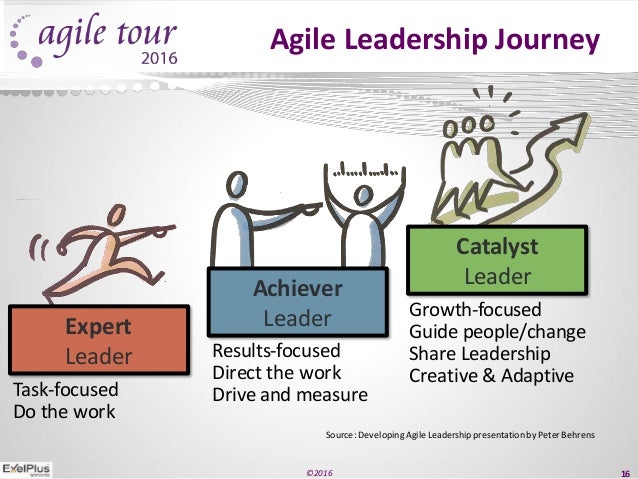
Reflections on the role of Certainly Trusted Orangutan (CTO)

Following the closing of a successful series A, the arrival of new management causes a departure rate of 65%, from both tech and product. Sounds familiar ? One of many stories the startup world offers! Now, high turnover rates in early stage companies are common. However, when too many fingers point to the newly appointed Chief Technology Officer, or CTO, it begs the question - why ? After all, what makes a good CTO to start with ?
I make the point that CTO’s are to be Certainly Trusted Orangutan‘s. That is, tech coaches that teams invest trust in. Certainly, in the probabilistic sense. The CTO is the Orangutan of early stage companies, he is an “excellent tool-user and versatile tool-maker".
In short, the CTO of the small cast ought to be hands-on, hold the tech vision, enable his fellows and get the best out of them. There are no shortcuts to this. He is not a tech lobbyist, an expert, or a product or strategy orangutan. Product and strategy orangutans don’t eat the same food, they couple with different types of monkeys.
To clarify the scope of this, I understand startups broadly, and am interested in the attributes of the CTO necessary for the success of tech and product teams of under 15 folks. Simply because the orangutan in charge of larger casts is a different animal. So, without further due, let’s start with what the CTO is not.
What the chief tech orangutan should not.
In early stage startups, both the tech and product orangutans work closely to guide the design of an MVP roadmap, with the help of their team. Both monkeys are also in charge of communicating their vision to the outside, investor monkeys. It is tempting for the CTO to remain in the shoes of the lobbyist and distance himself from his team, by default. He then becomes an internal consultant. Too far from the problems to help make informed decisions. Too busy lobbying, to continue adjusting and communicating the tech vision. Too misinformed to recruit spot on. True situation, not a Dilbert comic:
- Orangutan: We need to recruit a new team member to replace Alejandro. Can you please write a profile, since you were working most closely with him?
To compensate for his lack of time, the orangutan puts in place team structures. Pyramidal team structures. Clever initiative to salvage the lack of daily interaction with the team. Team structures are artifacts that prevent organic growth in small teams. Evidence of the new structure in place, when the tech orangutan sits in is own office, you know something is not right. Organic is vital to small companies, and vital to tech in particular. Simply because organic drives creative team cultures. Have a look at the Spotify blog to get a feel for this. For small companies to survive, creative thinking needs flourishing and this can’t be achieved with a two tier system, where top down structure - that is the tech orangutan - conflicts with bottom up mindset - that is the rest of tech and product. Another Dilbert ready story, true situation:
- Orangutan: These are our tech values. Explain to me what these mean to you.
In early stage companies, the chief tech orangutan is often jumping into his role underprepared, for instance moving from a former position as head or VP of engineering. Immediate action - to mark his territory - is to show the other monkeys how clever he is, in an attempt to gain trust and respect. Alas, this creates confusion! The role of the chief orangutan is to show the way, gather around the common goal, foster all the skills available in his cast. He is not an expert! I have seen CTO’s explaining how to create rational database models before figuring out exactly why building it. Or imposing technologies on his fellows that were beyond the team consensus. While the chief tech orangutan may be knowledgeable - and he should ! - the many experts around him should inform all decisions. Remember startups are team adventures. The best tech is built by fast, repeated trial and error of the team. It’s up to the CTO to guide this.

CTO’s ought to recognize their role changes with time, as they grow to be better leaders, but desperately need escaping the know-it-all pitfall. This creates confusion, distrust and actually slows down the company growth. Same pitfall as letting the opinion of the highest paid person in the room dominate the discussion. So let’s conclude this section with another one of my favorite true story:
- Orangutan: You guys are data scientists. Let me explain to you how the amazon recommendation engine works.
So now that we have discussed what the CTO is not - not an expert, not a lobbyist, not a top down executive - let’s discuss what attributes he needs to facilitate his journey.
What the chief tech orangutan should.
Who is the chief tech orangutan anyways? Originally, CTO’s come from research departments of larger organizations. Their responsibilities included giving a sense of direction to research themes and communicating with the rest of the organization on the value of invested dollars into often intangible initiatives. They were in charge of R&D departments. They came from an academic background, but not always. A nice read on the topic is this course from Princeton.
Today, the explosion of tech based companies and the maturity of the literature on how to build useful and scalable tech have helped establish the role of CTO. Simply put he is the head problem finder. He helps finding tech and data science problems relevant to the business. For this orangutan to do a descent job, he needs a vision of where the tech stack needs to go, he needs to enable his team to shape that vision and for any of his decisions to make sense, he needs to be hands-on.
Hands-on. That means: part of this monkey needs to continue doing his job as an engineer. It is essential that he helps validate learnings and participates in the activities of the teams. Personal opinion: it is his job to help transform prototypes into production code, to guide that transition. As we discussed, he his not the expert. However, being close to the details is the best way to take relevant decisions in order to scale prototypes. That’s why hands-on matters.
Enabler. By being involved, it is easier for him to help set best practices. Standards. He can help shape the culture from the inside, and spread energy and ideas by doing. This is the simple translation of leading by example. Enabler also means being able to step back from this day-to-day, and wear the cap of the coach. In this way, he helps others focus. He helps them be the best at what they do. Enabler finally means recruiting the right people to fit in the culture that he so actively helps building.
A final word on the enabler: a tech team is a bit like a sports team, there are inherent conflicts. Being present in the day to day is the best way to resolve these conflicts, constructively and from consensus, rather than from an ivory tower. A sports coach trains with his team and is with them at every practice, at every game. That’s the way to enable your team.
Visionary. The Certainly Trusted Orangutan bridges the gap between the tech stack as it is today and how it will be tomorrow. Bridging this gap involves building prototypes, first to convince himself of the viability of a particular technology, but also to bring data to the discussion with the rest of his cast. To bring relevance to the tech vision, he is close to the Chief Executive Orangutan who, at the early stages, holds the product vision. That means discussing with the outside world, clients, investors, to understand what to build. Finally, other CTOs and engineers can prove themselves very critical, and an amazing source of inspiration to build this vision reliably!
Closing
In closing of this short pool of opinions, chief tech officers of early stage startups have a significant role to play in how products are built. They need to be close enough to details to make relevant decisions, and step back when clarity or direction is needed. They, like the engineers they work with, need exposing themselves and getting feedback on the vision they are responsible to communicate and build.
It’s a job that requires humbleness, passion and discipline. That monkey needs to be certainly trusted! If so many early stage companies fail the growth exam, maybe the orangutans in charge are misfits.
Acknowledgement
Thank you Antoine, Dani, Alexi and Felix, this article improved in clarity and meaning thanks to your feedback.
